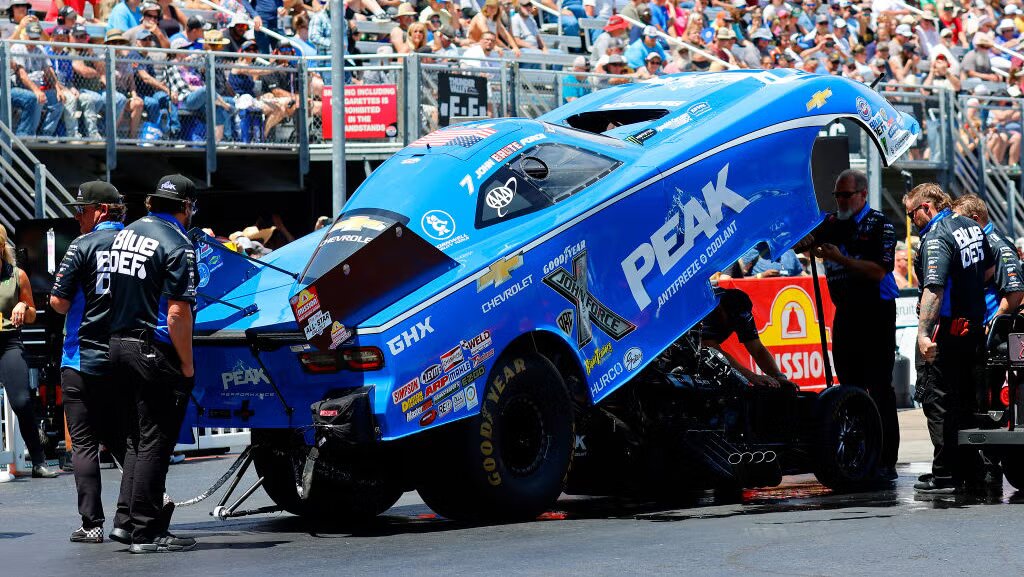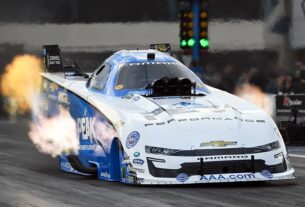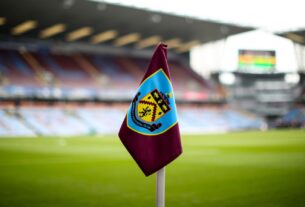As Gary Hartstein remained close by Teacher Sid Watkins, resting on the top of the clinical vehicle they shared, he was battling to track down the right words.
The pair were trusting that training will start for the 1994 Belgian Excellent Prix.
Spa-Francorchamps had been changed from the earlier year – a chicane had been acquainted at Eau Rouge with slow the field. The lattice was not equivalent to toward the beginning of the time either; a youthful David Coulthard currently joining forces Damon Slope at Williams.
Furthermore, the air between the companions had changed, as well.
“There was a colossal elephant in the vehicle,” Hartstein tells BBC Game.
The implicit was unspeakably miserable.
Four months prior, Watkins – Equation 1’s most memorable full-time specialist, a neurosurgeon and the game’s clinical representative – attempted to save two drivers, who kicked the bucket on progressive days at Imola. The first was Roland Ratzenberger. The second was Ayrton Senna, the game’s hotshot and a family companion of Watkins.
Hartstein delicately examined, asking Watkins how he was. The British bloke’s answer flabbergasted him.
“He recounts to me the narrative of when he felt Ayrton’s spirit leave his body,” Hartstein says.
“He’s reviving this person who he’s profoundly, profoundly connected to – this resembles reviving your child.
“It was one of those snapshots of extremely strong modesty for me. This person was imparting something to me that is so private.
“And afterward he focused in and got to work.”
At the point when Watkins showed up in F1 in 1978, passing was a normal event – something like one driver would be killed while dashing most years.
Watkins’ work was to lessen that casualty rate.
He had been recruited by Bernie Ecclestone, then, at that point, the proprietor of the Brabham group and CEO of the Recipe One Constructors’ Affiliation.
He had called Watkins at the London Clinic and requested to see him soon thereafter. Watkins was essential for the clinical board that gave cover at the English Great Prix, however it was whenever the pair first had spoken.
Ecclestone, who had once conveyed the cap of his old buddy Jochen Rindt back to the pits after a lethal accident, presented himself and made sense of the shortfalls in clinical wellbeing at circuits.
Watkins, a vehicle devotee with a preference for experience, consented to take on the test.
Wheels had been important for Watkins’ life since the beginning. He was brought into the world in Liverpool in 1928 and his dad ran Wally Watkins’ Bicycle Shop in Bootle. There was likewise a family carport where the little fellow worked close by his father, “siphoning petroleum, tinkering with vehicles and going about mechanics’ responsibilities”.
Subsequent to qualifying at the College of Liverpool’s Clinical School and a stretch in the US, Watkins got back to the UK in 1970 to turn into the principal teacher of neurosurgery at the London Emergency clinic.
Not long after his most memorable gathering with Ecclestone, Watkins was going to the Swedish Fantastic Prix in his new job as F1 specialist, consolidating it with his normal everyday employment.
At the Anderstorp circuit, Watkins found there was no helicopter accommodated practice since it was not viewed as risky contrasted and the race.
He would before long become familiar with the aimless idea of security game plans inside F1.
At Brands Portal for the English Stupendous Prix, he was confronted with a little, unprepared clinical focus staffed by two ambulanceman drinking brew.
Yet, basically there was a clinical focus. At the following race in Germany, at Hockenheim, the crisis office was a changed over single-decker transport, with its staff setting up camp in tents close by.
It mirrored a culture inside the game which appeared to acknowledge demise as a word related risk.
“At the point when Sid showed up in the game, life was modest,” Slope, Senna’s partner at Williams when he kicked the bucket in 1994, tells BBC Game.
“Drivers were viewed as daring individuals and playboys. The fatalities were simply aspect of the cost for living it up, truly.”
Hartstein, who worked all day close by Watkins as his agent from 1997 and succeeded him in 2005, concurs.
“At the point when Sid was asked by Bernie to come in, things were genuinely repulsive and had been ghastly for quite a while,” he says.
Watkins acted rapidly, telling Ecclestone circuits shouldn’t hold F1 races except if they had appropriately prepared clinical focuses. He asked that he and an anesthetist be permitted to follow the primary lap of a race in a quick vehicle outfitted with a radio and “driven by a capable, perceived race driver who knew the circuit”.
He additionally specified that helicopters ought to be accessible for all practices, the warm-up and the race.
Under 90 days in the wake of going to his first excellent prix in quite a while new job, Watkins saw direct the pressing need to have a significant impact on outlooks and further develop wellbeing measures.
After a tremendous first-lap crash at the 1978 Italian Stupendous Prix, police framed a line across the track and wouldn’t let him past. On the opposite side of the cordon Swedish driver Ronnie Peterson was caught in his destroyed Lotus with serious leg wounds. After huge postpones in getting him free and treated by doctors, Peterson passed on from an embolism the next morning.
Watkins was thusly given liability regarding overseeing and being effectively engaged with salvage game plans at circuits.
“Since this had never occurred, in light of the fact that this never existed, it was unquestionably hard,” Hartstein says. “Specialists around the circuit, conveyed with a particular goal in mind with a specific degree of skill, ambulances, reference clinics – the entire framework that we underestimate so presently, he needed to make that.
“There was no culture for that. There were the senseless contentions: ‘Indeed, individuals come to see the passings and that is essential for the fascination, and that’s what the drivers comprehend, they’re consenting.’
“The first and hardest fight was to change mindset. His occupation was delivered troublesome by refractory culture.”
To change societies, it assists with having mystique. Also, Watkins possessed a great deal of it.
Enamored with a stogie – he had a pocket to store them in his flame resistant overalls – a glass of wine, and a decent story, he was a natural figure in the enclosure.
“The Equation 1 carnival was his training,” says Watkins’ child Alistair.
“He was absolutely available – anybody could ask him anything.”
During his time working in F1, Watkins framed solid fellowships with some of the drivers yet had what he portrayed in his 1996 book Life at the Breaking point as an “strange bond” with Senna.
Watkins remained at Senna’s ranch outside Sao Paulo in 1993 where they went fishing together, while the Brazilian joined the Watkins family in Coldstream, in the Scottish Boundaries, as well as visiting Sid at his level in London’s Docklands.
“He resembled an individual from the family, the kids revered him,” Watkins’ widow Susan tells BBC Game.
“I used to make chocolates and treats, and when Ayrton was there a portion of the treat container would vanish.
“We went to the bar for lunch and individuals viewed at him like ‘it can’t be’.
“We’d all head out to the Chinese cafés in the East End. No one was very certain regardless of whether it was him.”
While with the Watkins family in Scotland, Senna was welcome to talk at Loretto School in Musselburgh.
Susan says: “He was very anxious addressing these young men and obviously there was a full turnout of individuals there and they would stand up and say ‘Sir’, and Ayrton said ‘If it’s not too much trouble, kindly don’t call me Sir’.
“He took care of it well indeed. They got some information about publicizing cigarettes on vehicles. He truly offered incredible responses in spite of being very apprehensive. Furthermore, obviously the young men adored it.
“A while later there was a gathering at the head administrator’s home and the Priest of Truro was there and he and Senna went off in the corner and supplicated together.”
Senna visited a close by exhibition hall committed to 1963 and 1965 F1 title holder Jim Clark, a Scot thought about one of the best drivers ever. Clark was killed in an accident at Hockenheim in 1968, and Susan recollects that while at the historical center Senna “felt entirely awkward – he said it resembled a hallowed place”.
Requested to depict the connection among Watkins and Senna, Susan says: “I think father-child. Sid was extremely fatherly to a great deal of the young men, the drivers, however he had a unique relationship with Ayrton in light of the fact that he was a particularly pleasant young fellow. I don’t think his life was simple. The connection between them, I think he totally believed Sid and he was alright with our loved ones.”
Hartstein trusts Senna’s “empathy” and “scholarly interest” attracted him to Watkins. At meeting all requirements for the 1992 Belgian Fabulous Prix, Erik Trance states had a rapid mishap that left the Frenchman oblivious. Senna, driving his McLaren absolutely, happened upon the fallout and halted his vehicle, got out and ran over prior to closing down Trance like states’ motor and supporting his head until clinical help showed up.
Afterward, Senna searched out Watkins, as Hartstein reviews: “Ayrton left the enclosure and came up to the vehicle and got clarification on pressing issues – ‘what occurs with the aviation route? What are my most memorable activities on the off chance that I’m first at the scene?’
“Sid’s pattern concerning the drivers was very paternalistic – they were his young men and his default with the drivers is that ‘I love them except if they substantiate themselves disgraceful of that adoration simply by being dolts’.
“Ayrton was way, way on the furthest edge of that range, A person who will pose Sid about the clinical inquiries after a mishap. The way that Ayrton felt an obligation to mind.”
Watkins had an individual and expert obligation of care towards Senna, which he would never have felt more unequivocally than while endeavoring to save his life at Imola in 1994.
After Ratzenberger’s close 200mph qualifying crash on Saturday, 30 April, a specialist was on the scene in 12 seconds or less. Revival was endeavored and the Austrian was taken to the emergency unit the clinical focus at the circuit. However, for every one of Watkins’ advancements and upgrades, it was clear the circumstance was miserable.
Senna showed up at the entryway of the middle. He had previously been to the location of the mishap and had addressed marshals however needed to know more.
Watkins



